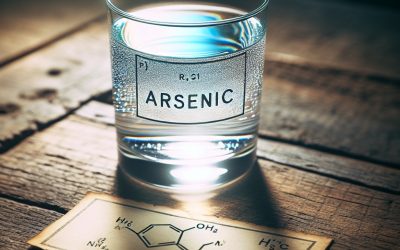🧪 Introduction to Chemistry
Unlocking the Secrets of Matter and Change
Chemistry is the science of matter—what it’s made of, how it behaves, and how it changes. It explores everything from the tiniest atoms and molecules to the vast chemical reactions that fuel stars, power engines, and sustain life itself. Often called the “central science,” chemistry connects physics with biology, medicine, geology, environmental science, and even engineering.
At its core, chemistry seeks to answer questions like:
-
What is this substance made of?
-
How does it interact with other substances?
-
Why do some materials burn, rust, or dissolve?
-
How can we create new materials, medicines, or fuels?
From the food we eat to the air we breathe, from cleaning products to smartphones, chemistry is everywhere. It helps explain natural phenomena like fire, digestion, and photosynthesis, while also driving innovations in technology, health, and sustainability.
By studying chemistry, we gain a deeper understanding of the world at a molecular level—and the tools to change it for the better.
Exploring the Versatility of Molybdenum (Mo) in British Industry
Molybdenum (Mo) is a chemical element that is widely used in various industries due to its unique properties and characteristics. It is a silvery-white metal that has a high melting point and is extremely resistant to corrosion. Molybdenum is an essential element in the production of steel, as it improves the strength, hardness, and toughness of the material. It is also used in aerospace and defence industries, chemical and petrochemical industries, energy generation and nuclear applications, electronics and semiconductor manufacturing, medical and healthcare industries, and environmental applications. In British industry, molybdenum plays a crucial role in ensuring the quality and performance of various products. The use of molybdenum in steel production helps to create stronger and more durable materials, which are essential for construction, automotive, and manufacturing industries. Additionally, molybdenum is used in the aerospace and defence sectors to enhance the performance of aircraft and military equipment. Its use in electronics and semiconductor manufacturing ensures the production of high-quality components for various electronic devices. Furthermore, molybdenum has applications in the medical and healthcare industries, where it is used in medical devices and equipment. Overall, molybdenum is an important element in British industry that contributes to the development and advancement of various sectors. Summary Molybdenum (Mo) is an important element in British industry due to its unique properties and characteristics. Molybdenum (Mo) is widely used in steel production and manufacturing, as it improves the strength and durability of steel. Molybdenum (Mo) is also used in aerospace and defence industries, as well as in the chemical and petrochemical industries. Molybdenum (Mo) has applications in energy generation and nuclear applications, as well...
Exploring the Wonders of Niobium: The Versatile Metal with Endless Possibilities
Niobium is a chemical element with the symbol Nb and atomic number 41. It is a soft, grey, ductile transition metal that is found in the Earth’s crust. Niobium has several unique properties that make it valuable in various industries. It has a high melting point, excellent corrosion resistance, and is highly resistant to wear and tear. These properties, combined with its low density, make niobium an ideal material for use in a wide range of applications. One of the most common uses of niobium is in the production of steel. Adding small amounts of niobium to steel can significantly increase its strength and toughness. This makes it ideal for use in construction, automotive, and infrastructure projects. Niobium is also used in the electronics industry, where it is used to make capacitors and other electronic components. Its high melting point and excellent electrical conductivity make it an ideal material for these applications. Summary Niobium is a metal with unique properties, including high melting point, corrosion resistance, and superconductivity. Niobium was discovered in the early 19th century and has since found applications in various industries, including aerospace, medicine, and energy. Niobium alloys offer advantages such as increased strength and durability, making them ideal for use in high-stress environments. Niobium is crucial in space exploration and aviation due to its ability to withstand extreme temperatures and pressures. Niobium has potential in sustainable energy technologies, such as fuel cells and solar cells, and is also used in art and design for its aesthetic qualities. The History of Niobium: From Discovery to Modern-day Applications Niobium was first discovered in 1801 by English chemist...
The Wonders of Zirconium: Exploring the Benefits and Applications of Zr in Modern Technology
Zirconium is a chemical element with the symbol Zr and atomic number 40. It is a lustrous, gray-white metal that is highly resistant to corrosion and has a high melting point. Zirconium was first discovered in 1789 by the German chemist Martin Heinrich Klaproth, who named it after the mineral zircon, from which it was isolated. Zirconium has a number of unique properties that make it highly valuable in various industries. It is known for its excellent resistance to corrosion, even in highly acidic or alkaline environments. This makes it an ideal material for use in chemical processing plants, where it is used to construct tanks, pipes, and other equipment that come into contact with corrosive substances. In addition to its corrosion resistance, zirconium also has a high melting point and is highly refractory. This makes it suitable for use in high-temperature applications, such as nuclear reactors and aerospace engines. Zirconium is also lightweight and has a high strength-to-weight ratio, making it an ideal material for use in aerospace applications where weight reduction is critical. Summary Zirconium is a versatile and durable metal with a wide range of applications. Zirconium is crucial in ensuring safety and efficiency in nuclear reactors. Zirconium’s lightweight and high-strength properties make it ideal for use in aerospace. Zirconium is biocompatible and corrosion-resistant, making it a popular choice for medical implants. Zirconium is a key component in capacitors and transistors in electronics. Zirconium in Nuclear Reactors: Ensuring Safety and Efficiency One of the most important applications of zirconium is in nuclear reactors, where it is used as a cladding material for fuel rods. The zirconium...
Exploring the Versatility of Yttrium: A Dive into its Applications in Modern Technology
Yttrium is a chemical element with the symbol Y and atomic number 39. It is a silvery-white, lustrous metal that is relatively stable in air. Yttrium is a rare earth element and is found in small amounts in the Earth’s crust. It was discovered in 1794 by Johan Gadolin and named after the village of Ytterby in Sweden, where it was first found. Yttrium has several unique properties that make it valuable in various industries. It has a high melting point of 1,522 degrees Celsius, making it suitable for use in high-temperature applications. It is also a good conductor of electricity and heat, making it useful in electronics and aerospace applications. Yttrium is also known for its ability to form stable compounds with other elements, which makes it useful in the production of alloys and ceramics. Summary Yttrium is a rare earth metal with unique properties and characteristics. Yttrium is widely used in electronics, aerospace, medical science, energy, glass production, ceramics, metallurgy, and environmental science. Yttrium plays a crucial role in the development of semiconductors, LEDs, materials science, and engineering. Yttrium is used in MRI scans and cancer treatment, as well as in nuclear power and renewable energy sources. Yttrium has promising future prospects in technology, with advancements and innovations in various fields. Yttrium in Electronics: Applications in Semiconductors and LEDs Yttrium plays a crucial role in the production of semiconductors, which are essential components of electronic devices such as computers, smartphones, and televisions. Yttrium oxide is used as a dopant in the production of silicon wafers, which are the building blocks of semiconductors. By adding yttrium to silicon,...
Exploring the Benefits and Uses of Strontium (Sr) in British Industries
Strontium (Sr) is a chemical element that belongs to the alkaline earth metals group. It is a soft, silvery-white metal that is highly reactive and easily oxidizes in air. Strontium has a number of unique properties that make it valuable in various industries in Britain. In the industrial sector, strontium is primarily used as a raw material for the production of other compounds. It is commonly found in the form of strontium carbonate, which is used in the manufacturing of pyrotechnics, glass, ceramics, and other products. Strontium also has applications in medical imaging technologies, agriculture, construction materials, paints, and pigments. Summary Strontium (Sr) is a versatile element with a wide range of industrial uses in Britain. Pyrotechnics and fireworks rely on strontium (Sr) for their vibrant red colour. Strontium (Sr) is a key component in the production of glass and ceramics, improving their durability and strength. Medical imaging technologies such as X-rays and MRI machines use strontium (Sr) to enhance image quality. Strontium (Sr) has potential benefits in agriculture and food industries, improving crop yields and animal health. Strontium (Sr) in the Manufacturing of Pyrotechnics and Fireworks One of the major industrial uses of strontium in Britain is in the manufacturing of pyrotechnics and fireworks. Strontium compounds, such as strontium nitrate and strontium carbonate, are used as oxidizers and colorants in fireworks. When strontium is burned, it produces a vibrant red color, which is highly desired in fireworks displays. The use of strontium in pyrotechnics offers several benefits. Firstly, strontium-based fireworks produce a bright red color that is easily distinguishable and visually appealing. This makes them popular for use...
Exploring the Wonders of Rubidium: Unveiling the Secrets of this Alkali Metal
Rubidium is a chemical element with the symbol Rb and atomic number 37. It is a soft, silvery-white alkali metal that belongs to the group of elements known as the alkali metals. Rubidium is highly reactive and has a low melting point, making it a fascinating element to study. It is found in small quantities in the Earth’s crust and has various applications in fields such as technology, medicine, and scientific research. Rubidium has several unique properties that make it interesting to scientists. It is one of the most reactive elements, readily reacting with water and oxygen in the air. It is also highly conductive, making it useful in electronics and battery technology. Additionally, rubidium has a low ionization energy, meaning it can easily lose an electron and form positive ions. These properties make rubidium valuable in various applications. Summary Rubidium is a rare and fascinating element with unique physical and chemical properties. Rubidium was discovered in 1861 by German scientists Robert Bunsen and Gustav Kirchhoff. Rubidium has a close atomic structure to other alkali metals and is highly reactive with water and air. Rubidium is found in small amounts in minerals such as lepidolite and pollucite, and in seawater and mineral springs. Rubidium has various applications in modern science, including in atomic clocks, GPS systems, and medical imaging. The Discovery of Rubidium: A Historical Perspective Rubidium was discovered in 1861 by German chemists Robert Bunsen and Gustav Kirchhoff. They were studying the mineral lepidolite when they noticed a bright red line in its spectrum. This line indicated the presence of an unknown element, which they named rubidium after...
Unraveling the Mysteries of Krypton: Exploring the Fascinating Properties of the Elusive Element
The periodic table is a fundamental tool in chemistry that organizes all known elements based on their atomic number, electron configuration, and recurring chemical properties. One group of elements that holds particular significance is the noble gases. These gases, including helium, neon, argon, krypton, xenon, and radon, are characterized by their low reactivity and stable electron configurations. Among these noble gases, krypton plays a crucial role in various scientific and industrial applications. Krypton is a chemical element with the symbol Kr and atomic number 36. It was discovered in 1898 by Sir William Ramsay and Morris Travers while studying the residue left after evaporating liquid air. The name “krypton” is derived from the Greek word “kryptos,” meaning hidden or concealed, as it was initially difficult to isolate from other gases. Since its discovery, krypton has been extensively studied for its physical and chemical properties, as well as its applications in various fields. Summary Krypton is an important element in the periodic table with unique physical and chemical properties. The discovery of krypton was a significant milestone in the history of chemistry. Krypton has a high density and boiling point, making it useful in industrial applications such as lighting and lasers. Krypton also has medical applications in diagnostic imaging and radiotherapy. Krypton’s presence in the atmosphere has an impact on climate change and the environment. The Discovery of Krypton: A Brief History and Milestones The existence of krypton was first observed in 1896 by Scottish chemist Sir William Ramsay and English chemist Morris Travers. They were studying the residue left after evaporating liquid air when they noticed a new spectral...
Uncovering the Properties and Uses of Bromine: A Fascinating Element
Bromine, a chemical element with the symbol Br and atomic number 35, is a highly reactive reddish-brown liquid that belongs to the halogen group of elements. It was first discovered by the French chemist Antoine Jérôme Balard in 1826. Balard was able to isolate bromine from seawater, which led to its name derived from the Greek word “bromos” meaning “stench” due to its strong odor. Bromine has since become an essential element in various industries. Its unique properties make it valuable in applications such as flame retardants, water treatment, agriculture, medicine, and photography. The versatility of bromine has made it a crucial component in many products and processes. Summary Bromine was discovered in 1826 by Antoine Balard, a French chemist. Bromine is a reddish-brown liquid that is highly reactive and toxic. Bromine occurs naturally in seawater, salt lakes, and underground brine deposits. Exposure to bromine can cause skin irritation, respiratory problems, and even death in high concentrations. Bromine is used in a variety of industrial applications, including flame retardants, fumigants, and disinfectants. Physical and Chemical Properties of Bromine Bromine is a reddish-brown liquid at room temperature and has a strong, unpleasant odor. It is one of the few elements that exist as a liquid under normal conditions. It has a high density and is slightly soluble in water. Bromine is highly reactive and can easily form compounds with other elements. Chemically, bromine is a halogen and shares similar properties with other elements in its group, such as chlorine and iodine. It has seven valence electrons, making it highly reactive and capable of forming stable compounds with other elements. Bromine...
The Perilous Presence of Arsenic (As) in British Waters: A Cautionary Tale
Arsenic contamination in UK water systems has become a growing concern in recent years. The potential health risks associated with arsenic exposure have raised alarm bells among the public and policymakers alike. Arsenic is a naturally occurring element that can be found in rocks and soils. However, human activities such as mining, industrial processes, and agricultural practices can also contribute to arsenic contamination in water systems. This article will explore the historical use of arsenic in the UK, the health risks associated with exposure, the sources of arsenic in British waters, the distribution of arsenic in water systems, the challenges of detecting and monitoring arsenic levels, the regulatory framework for arsenic in UK water, the role of water treatment technologies in mitigation, and the public health implications of arsenic in drinking water. Summary Arsenic contamination in British waters is a growing concern. Arsenic has been historically used in the UK and poses health risks. Arsenic in British waters comes from natural and human sources. Arsenic levels in UK water systems vary regionally. Detecting and monitoring arsenic levels in water is challenging. The Historical Use of Arsenic in the UK: A Brief Overview Arsenic has been used for various purposes in the UK throughout history. It was commonly used as a pesticide to control pests on crops and as a wood preservative to protect timber from decay and insect damage. The use of arsenic as a pesticide was particularly prevalent during the Victorian era when it was used to combat pests such as rats and insects. The legacy of arsenic use has left a lasting impact on the environment and...
Exploring the Fascinating Properties of Germanium: A Look into the Versatile Element
Germanium is a chemical element with the symbol Ge and atomic number 32. It is a lustrous, hard, grayish-white metalloid in the carbon group, chemically similar to its group neighbors silicon and tin. Germanium has a wide range of applications due to its unique electronic, optical, and catalytic properties. It is used in the semiconductor industry, as a catalyst in chemical reactions, in infrared and optical fibers, in medicine, as a geothermal energy source, in nanotechnology, and in metallurgy. Summary Germanium is a chemical element with unique properties that make it useful in a variety of applications. In the semiconductor industry, germanium is used as a substrate for electronic devices due to its high electron mobility. Germanium can also act as a catalyst in chemical reactions, making it useful in the production of plastics and other materials. The optical properties of germanium make it useful in infrared and optical fibres, which are used in telecommunications and other industries. Germanium has potential applications in medicine, geothermal energy production, nanotechnology, metallurgy, and emerging technologies. The Unique Electronic Properties of Germanium Germanium plays a crucial role in the semiconductor industry. It was one of the first materials used to make transistors and other electronic devices. Germanium has a high electron mobility, which means that it allows electrons to move quickly through it. This property makes it an excellent material for use in transistors, where fast switching speeds are required. In comparison to silicon, germanium has a higher electron mobility but a lower bandgap energy. This means that germanium can conduct electricity more efficiently than silicon at low temperatures but becomes less efficient...
Exploring the Wonders of Gallium: A Fascinating Metal with Unique Properties
Gallium is a unique and uncommon metal that has captured the attention of scientists and researchers around the world. It is a soft, silvery-white metal that is found in small amounts in various minerals. Gallium is known for its low melting point, which is just above room temperature, making it one of the few metals that can melt in your hand. This property, along with its other unique characteristics, has led to its use in a wide range of applications in technology, industry, medicine, and even space exploration. Summary Gallium is a rare metal with unique properties that make it useful in a variety of industries. Gallium has a low melting point and can be used in semiconductors, LEDs, and solar cells. The discovery of gallium is a fascinating story involving a French chemist and a missing element in the periodic table. Gallium exhibits unusual behaviour at low temperatures, including becoming a liquid when held in the hand. Gallium has potential uses in medicine and biotechnology, including as a contrast agent in MRI scans. The Physical and Chemical Properties of Gallium Gallium possesses several interesting physical and chemical properties that set it apart from other metals. It has a melting point of 29.76 degrees Celsius (85.57 degrees Fahrenheit), which is just below the average human body temperature. This low melting point allows gallium to melt when held in the hand, giving it a fascinating and somewhat magical quality. In addition to its low melting point, gallium also has a high boiling point of 2,204 degrees Celsius (4,000 degrees Fahrenheit), making it suitable for use in high-temperature applications. It is...
The Importance of Zinc (Zn) in Maintaining Optimal Health and Wellness
Zinc is an essential mineral that plays a crucial role in maintaining overall health and wellness. It is involved in various physiological processes in the body, including immune function, cognitive function, skin health, wound healing, vision, reproductive health, bone health, and gut health. Zinc is not produced by the body, so it must be obtained through diet or supplementation. In terms of dietary sources, zinc can be found in a variety of foods. Some of the best sources of zinc include red meat, poultry, seafood (such as oysters and crab), dairy products, nuts and seeds (such as pumpkin seeds and cashews), legumes (such as chickpeas and lentils), and whole grains. It is important to consume an adequate amount of zinc through diet to ensure optimal health and wellness. Zinc plays a vital role in supporting immune system function. It is involved in the development and function of immune cells, such as T cells and natural killer cells, which help the body fight off infections. Research has shown that zinc supplementation can help reduce the duration and severity of colds and other respiratory infections. Zinc also has anti-inflammatory properties that can help modulate the immune response and reduce inflammation in the body. When it comes to cognitive function and mental health, zinc also plays a significant role. Zinc is involved in neurotransmitter function and communication within the brain, which can impact mood, memory, and learning. Research has shown that zinc deficiency is associated with cognitive impairments and mood disorders such as depression. Supplementing with zinc has been shown to improve mood and cognitive function in some studies. In terms of...













